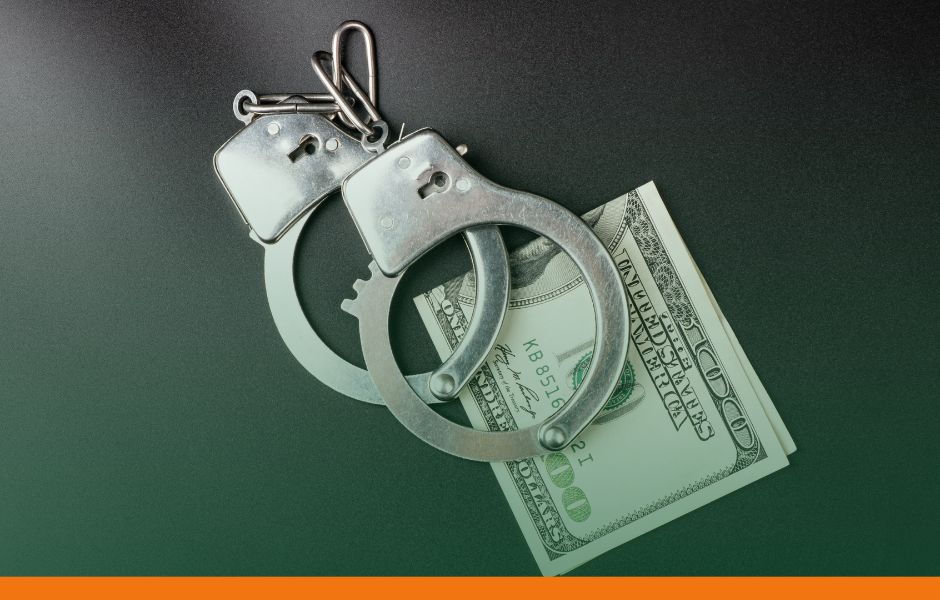How They Identify and Pursue Offenders
The pursuit of offenders is an integral part of maintaining law and order in any society. Whether it’s tracking down a criminal on the run or identifying someone who has committed a financial crime, law enforcement agencies employ a variety of techniques to identify and pursue offenders. Here, we’ll explore some of the strategies and technologies used by law enforcement to track down individuals who have broken the law.
-
Surveillance
Surveillance is a cornerstone of modern law enforcement. Whether it’s monitoring a potential suspect’s activities or keeping tabs on public areas, surveillance plays a crucial role in identifying and pursuing offenders. Closed-circuit television (CCTV) cameras are commonly used to monitor public spaces, and they have been instrumental in solving crimes, especially in urban areas.
Surveillance extends beyond traditional cameras, though. Advanced facial recognition technology is increasingly being used to identify individuals in crowded places. This technology can match faces against databases of known offenders or suspects, making it easier to track down and apprehend those involved in criminal activities.
-
Forensics and Evidence Analysis
Forensic science has revolutionized the way law enforcement identifies offenders. Techniques like DNA analysis, fingerprint matching, and ballistics analysis are all used to link criminals to their crimes. Forensic evidence can be crucial in providing leads that lead to the identification and pursuit of offenders.
DNA databases, in particular, have become invaluable tools in identifying and tracking down criminals. When a crime scene yields DNA evidence, it can be compared to databases of known offenders. This can lead to a match, providing investigators with a solid lead.
-
Digital Forensics
In the digital age, much of our lives are stored on electronic devices. Law enforcement agencies are increasingly turning to digital forensics to identify and pursue offenders. Digital forensics involves the recovery and analysis of electronic data to support criminal investigations.
This can include extracting information from cell phones, computers, or even cloud storage. It’s not uncommon for digital footprints to provide crucial evidence in cases, whether it’s tracking communications, financial transactions, or other digital records.
-
Informants and Tips
Sometimes, the best source of information comes from insiders. Law enforcement often relies on informants or tips from the public to identify and pursue offenders. Individuals with knowledge of criminal activities may provide valuable information to law enforcement agencies.
Anonymous tip lines, where individuals can report information without revealing their identities, are one way for the public to help law enforcement. Informants, on the other hand, can provide inside information on criminal organizations or individuals involved in illegal activities.
-
Collaboration and Data Sharing
Law enforcement agencies at different levels often collaborate and share data to identify and pursue offenders. For example, local police departments may share information with federal agencies, such as the FBI, to track down fugitives who have crossed state lines.
Data sharing also extends internationally. Interpol, for instance, facilitates international police cooperation and information exchange. This collaboration helps law enforcement track down offenders who may have fled the country.
-
Behavioral Profiling
Criminal profilers study the behavior of offenders to create profiles that help identify and pursue them. Behavioral profiling is often used in cases where the offender’s identity is unknown. Profilers analyze crime scenes and evidence to understand the offender’s motives, background, and possible future actions.
While profiling doesn’t always lead to an immediate identification, it can provide critical insights that guide investigations and help narrow down lists of suspects.
-
Social Media and Open Source Intelligence
The digital footprint that individuals leave on the internet can be a goldmine for law enforcement. Social media platforms and other online resources are increasingly used to identify and pursue offenders.
Law enforcement agencies can gather information about a person’s activities, associates, and even their location through their online presence. This can be particularly useful in tracking down individuals involved in cybercrimes, as well as those who use social media to communicate and plan criminal activities.
-
Warrants and Legal Tools
Obtaining warrants and using legal tools is another critical aspect of identifying and pursuing offenders. Search warrants, for instance, allow law enforcement to access specific locations or seize evidence. Arrest warrants authorize the apprehension of individuals suspected of committing crimes.
Law enforcement agencies must adhere to legal procedures and obtain proper authorization to avoid infringing on individuals’ rights. These legal tools are essential in the pursuit of offenders within the boundaries of the law.
-
Undercover Operations
Undercover operations are a classic tool used by law enforcement to infiltrate criminal organizations and gather information about offenders. Undercover agents may assume false identities to gain the trust of criminals and gain access to inside information.
These operations can be risky, but they have been successful in identifying and pursuing offenders in a wide range of criminal activities, from drug trafficking to organized crime.
-
International Cooperation
In cases involving transnational or international offenders, cooperation between law enforcement agencies from different countries is vital. This includes sharing information, collaborating on investigations, and facilitating extradition of criminals who have fled abroad.
Efforts like Europol in Europe or Interpol on a global scale help coordinate international efforts to identify and pursue offenders who may have committed crimes in multiple jurisdictions.
Conclusion
Identifying and pursuing offenders is a multifaceted process that involves a combination of traditional investigative techniques and cutting-edge technologies. Law enforcement agencies use a variety of tools and strategies, from surveillance and forensics to digital investigations and behavioral profiling. Collaboration and information sharing between agencies at different levels and across borders are also critical in tracking down offenders, especially in today’s interconnected world.
While the methods employed by law enforcement have evolved over the years, the objective remains constant: ensuring that those who break the law are held accountable for their actions. By staying current with the latest techniques and technologies, law enforcement agencies can continue to improve their ability to identify and pursue offenders, ultimately contributing to safer and more secure communities.








